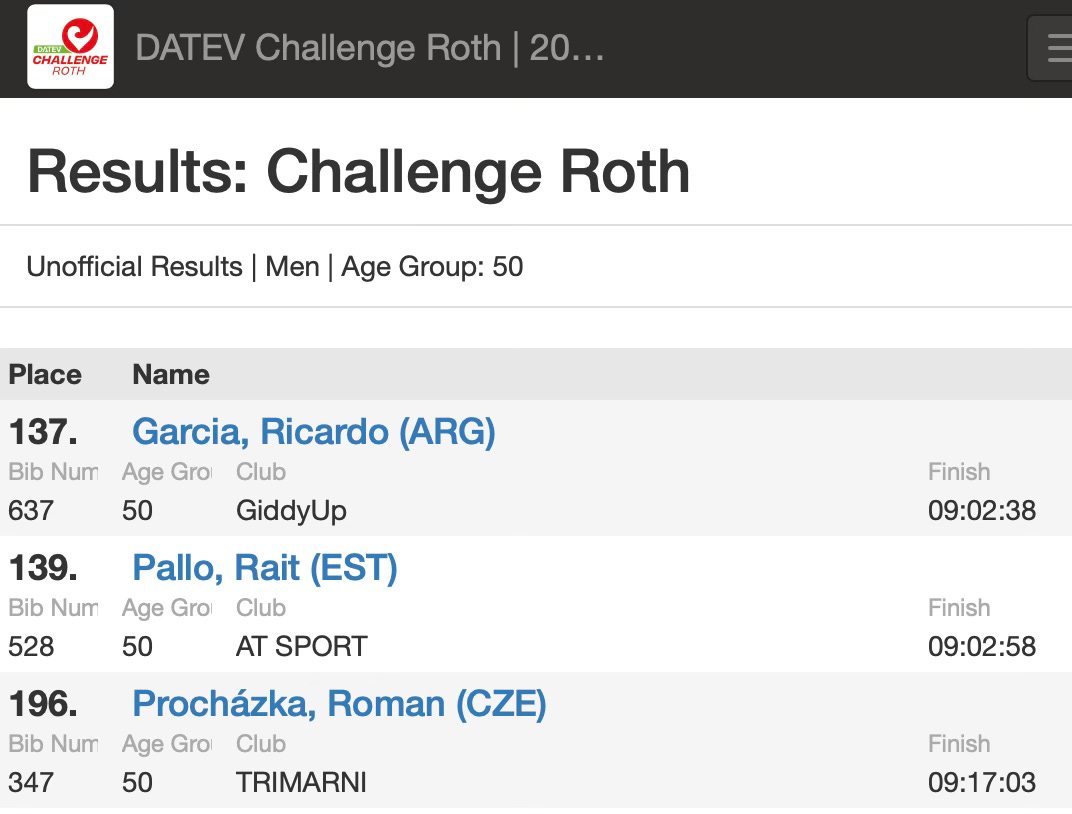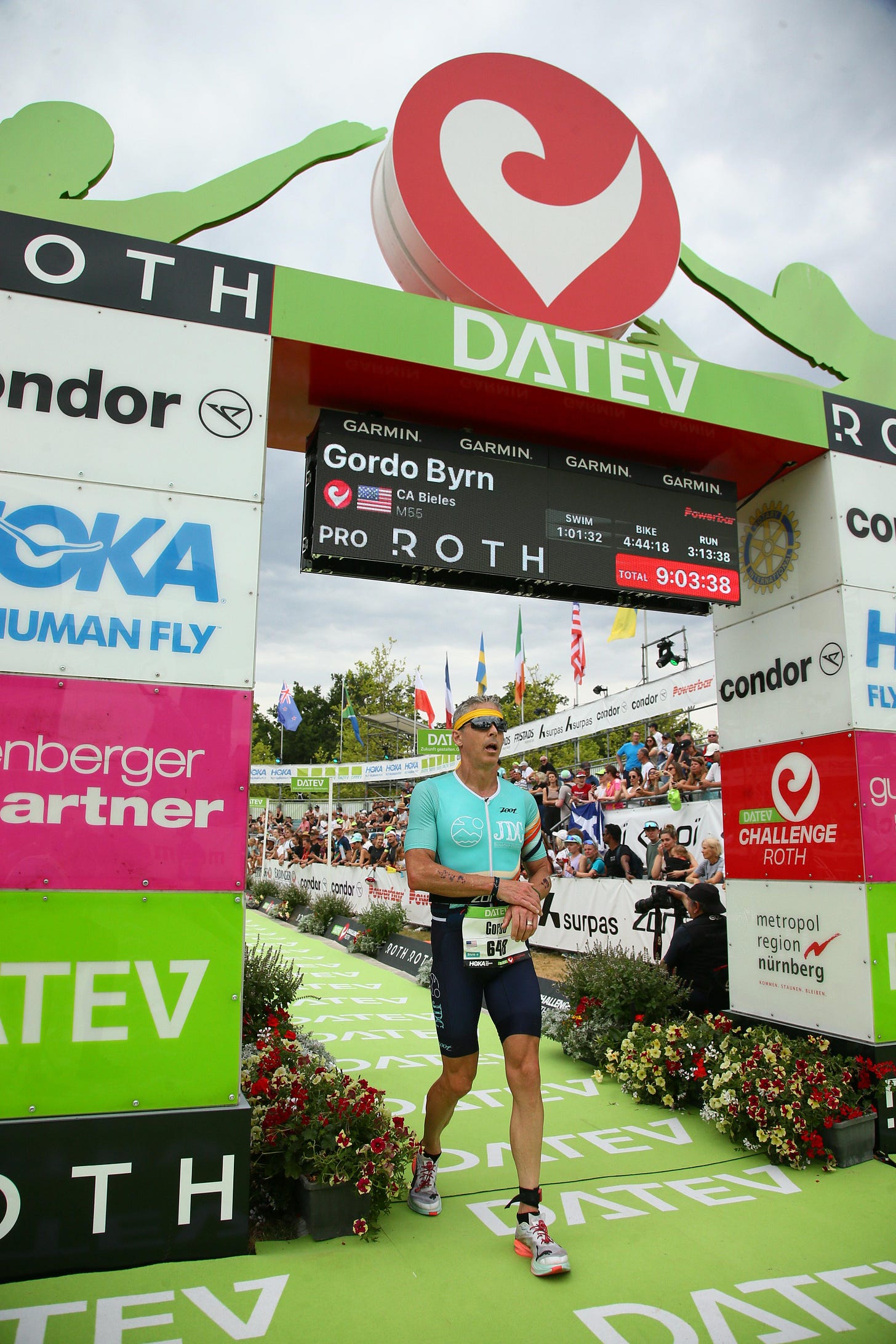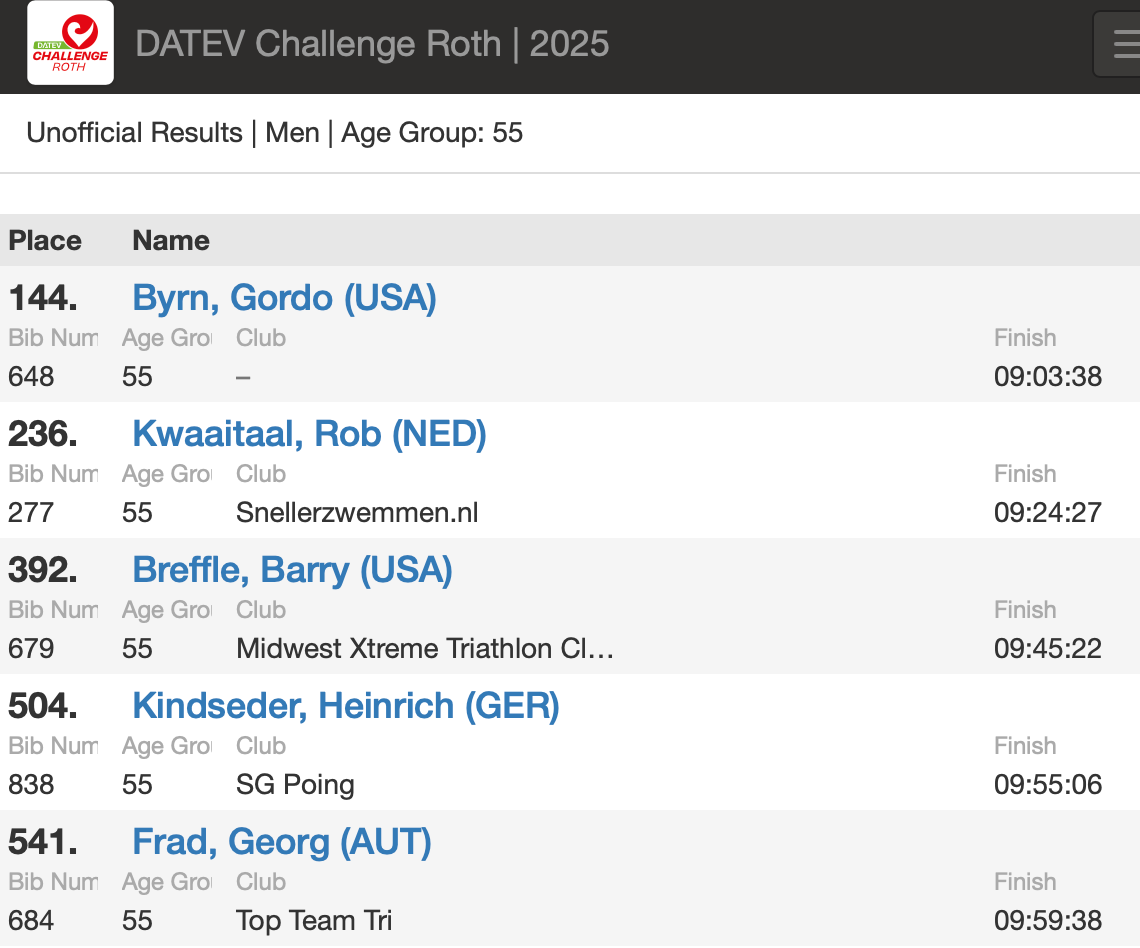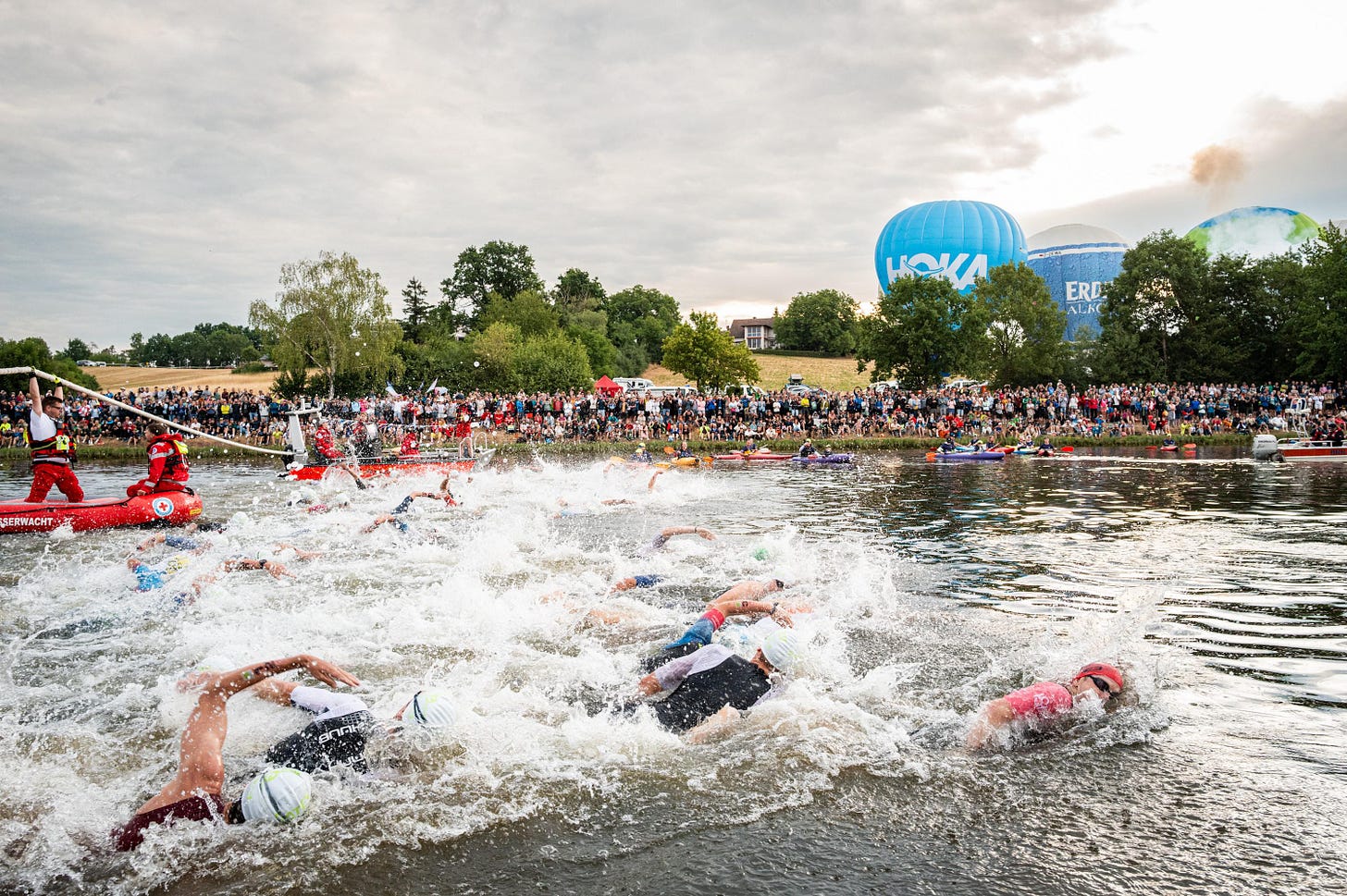On my personal blog, I wrote out an Ironman race strategy template. I won’t repeat those tips here so start by accessing the link.
I managed what I believe to be a world best for my age group (55-59) across the distance. I write best rather than record because every course is different, and courses can be short. For example, a Dane in my age group went 8:55 the year the bike course was 170 km (2021). This year, I had 178 km and noticed the final 10 km went by quickly, even with a headwind.
What I’m going to explain is how to race a fast Ironman in a strong field. It’s a different strategy than my template. Last weekend, it took me a couple hours to realize I wasn’t in the race environment I expected.

Roth attracts great athletes and provides an excellent benchmark for the distance. Many outstanding Europeans don’t make the trip to Hawaii. Both German long distance races (Roth & Frankfurt) offer an opportunity to measure ourselves against the best athletes in the world.

The advice in my How To Race series applies to races without packs. Many people get emotional about packs, so let’s call them groups. While I prefer to race alone, I know how to use groups effectively.

A little math…

Wave starts spread out fast athletes. However, in a self- (or time-) seeded field they cluster and hit the bike course at similar times.
I sorted the Roth results and there were 235-ish athletes swimming 60 to 70 minutes. There are three waves of Sub-10 capable amateurs, who leave within 10 minutes of each other. That means, we have more than 500 Sub-10 athletes hit the water (most of whom can really ride a bike).
The slower swimmers, who start first, end up riding with the faster swimmers, who start after them.
I swam 61 minutes (190th best swim) and started 5 minutes back from the fastest wave. I rolled out of T1 with the fastest amateurs around me. As explained below, I let them go and followed my initial race strategy.
Roth, to their credit, are aware of the realities of large field, fast racing.
There are a lot of officials on the course.
All the speedy racers have Sub-9 markers on our bibs.
The pros use Race Ranger.
The draft zone is 12 meters.
The challenge is draft zone enforcement. Most athletes play to the limits enforced by the officials, not what’s written in the rule book. More on this point in the bike section below.
An interesting quirk about female racing at Roth. If you are a top swim-biker (amateur female) then you’ll be racing around men for much of your day. Same deal if you are a weak swimming, strong-biker (elite female). Read on to learn the impact the amateur men will have on your race.
The Swim and Overall Seeding
Off the start line, the fastest swimmers will pull away. Most races see breaks at 500 and 1,500 meters when someone blows up and the swimmers behind lack the capacity to bridge around.
I hadn’t trained to swim hard so didn’t play that game. It was like being a young pro (again) and watching the fast guys swim away.
The main thing to do is draft at every opportunity.
Early? Let the best swimmers pull you off the line, stay controlled.
Middle? Perhaps you are a decent swimmer, with a controlled start. Look for someone coming through. This was my game last weekend and it paid off.
Late? If you find yourself alone then keep taking drafts, even short ones, from everyone who swims past and everyone you catch in the earlier waves. All those mini drafts add up.
Once your draft is good enough, it's good enough. It never makes sense to switch, or go solo. Despite giving this advice for decades, I tried to switch after 2,500 meters, wasted energy then went back to my previous set of feet.
In Roth (like Kona), your swim exit position doesn’t matter much because you’re going to have great athletes around all day. In smaller / weaker field races, the swim can have an impact on the overall result. This happens when a strong group of lead athletes forms with the skills to work together on the bike.
Keep reading with a 7-day free trial
Subscribe to Endurance Essentials to keep reading this post and get 7 days of free access to the full post archives.







